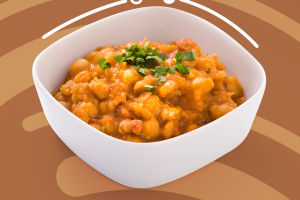Noodles are easy to digest and absorb and have the effect of improving anemia, strengthening immunity, and balancing nutrient absorption.The taste of noodles presented by different ways of making noodles is also different. Which one do you like best?
Noodles have the following main benefits to the human body.
1. Stomach: Eating a bowl of warm noodles is most conducive to nutrient absorption; easy to digest and absorb after boiling the noodles are the cleanest, and can greatly reduce the occurrence of gastrointestinal diseases.
2. Boost immunity: noodles with al dente texture contain more protein, which can supplement the body's nutritional needs. Protein is the most important nutrient to maintain immune function and is the main component of white blood cells and antibodies.
3. Improve anemia and promote the operation of the body's qi and blood.
There are various kinds of noodles in the world.
1. Japanese udon noodles. Japanese people use salted water when making noodles to promote the rapid formation of gluten within the dough, then roll it into a large cake, stack the large cake and cut it into noodles with a knife.
Later, rice flour was added to the flour during the making process, so that the noodles were made between cut noodles and rice flour, and tasted softer.
There are also two ways to eat udon noodles: cold udon with thick ingredients, and hot udon with a soup base. Unlike soba, the soup base of udon noodles does not need to be very light.
Because udon noodles themselves do not have much flavor, so generally use the soup with meat or seafood, the soup with shichimi, soy sauce, sake, miso, mushrooms, and other seasonings.
2. Malay fried noodles is a very popular homemade fried noodles among Malays, which can be seen in restaurants and street stalls in Singapore and Malaysia. There are two ways to make Malay fried noodles.
One is a vegetarian stir-fry, and the other is to be able to add various seafood and meat to make the flavor change to sweet and spicy or salty and spicy.
Malay chow mein uses yellow noodles. Heat the wok, add the eggs and scramble them, then add the fish cakes, fish fillets, shrimps, and sambar sauce (a special sauce often used in Malay cuisine with the flavor of shrimps or seafood) and chili sauce together, at this time.
You can add the yellow noodles and stir-fry them over low heat to let the noodles absorb the flavor, then add the bok choy, shredded onions, and tomatoes and stir-fry them over high heat to finish.
3. Knife-cutting noodles, ten to ten pounds of dough, bare hands end in the arm, the hands of the knife, in the thick side of the thin angular shape of the noodles, like a willow leaf, will fly precisely into the pot, a good noodle chef cutting noodles is like an art show to enjoy.
The noodles are also seasoned with a variety of meat and vegetables, with a balanced nutrition. There are tomato sauce, meat fry sauce, lamb field, golden needle, fungus egg, etc., and seasonal fresh vegetables.
Such as cucumber shreds, leek flowers, mung bean sprouts, boiled soybeans, minced green garlic, chili noodles, etc., and a drop of old vinegar, very delicious.


